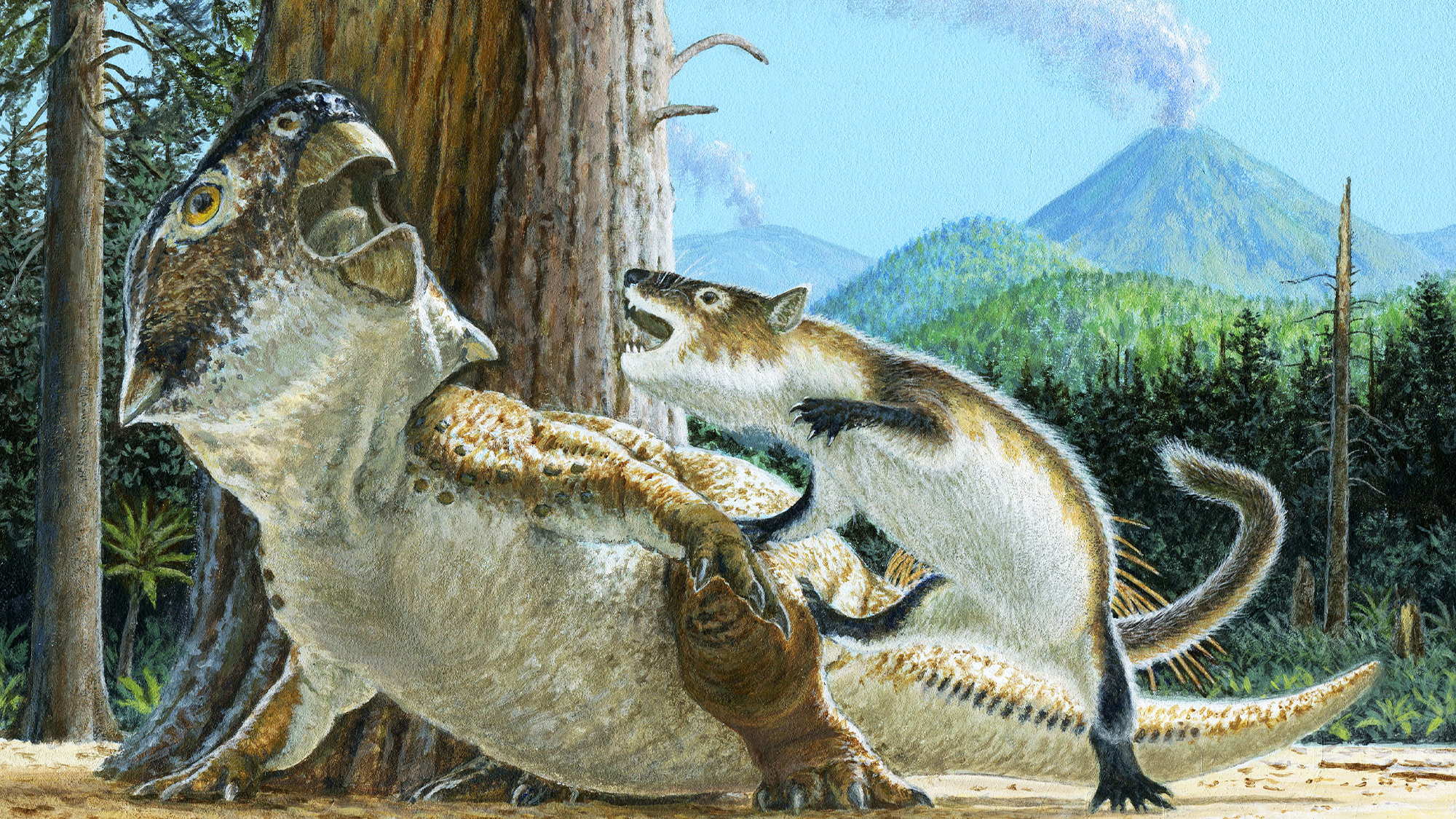

About 125 million years ago, a carnivorous mammal and a large herbivorous dinosaur were locked in a fight to the death. The strangest part, however, is that the mammal was likely the primary aggressor. This unusual fossil discovery is described in a study published July 18 in the journal Scientific Reports, and challenges the idea that dinosaurs fully dominated in the Creteceous period (145 million to 66 million years ago) and lacked threats from their mammal contemporaries.
[Related: The ancestor of all placental mammals survived the dino-killing asteroid.]
“The two animals are locked in mortal combat, intimately intertwined, and it’s among the first evidence to show actual predatory behavior by a mammal on a dinosaur,” co-author and Canadian Museum of Nature palaeobiologist Jordan Mallon said in a statement.
The dinosaur in this fossil is a species of Psittacosaurus, which were herbivores that were roughly the size of a large dog. They are also among the earliest known horned dinosaurs that lived in present-day Asia around 125 to 105 million years ago.
An extinct badger-like mammal called Repenomamus robustus is the aggressive mammal. While the creature was not large by dinosaur standards at about 26 to 31 pounds and only three feet long, it was still one of the largest mammals of the Cretaceious period. Previously, paleontologists discovered that Repenomamus preyed on dinosaurs including Psittacosaurus due to clues left behind by the fossilized bones of baby dinosaurs found in the mammals’ stomach.
“The co-existence of these two animals is not new, but what’s new to science through this amazing fossil is the predatory behavior it shows,” Mallon said.
The fossil in this study was unearthed in China’s Liaoning Province in 2012 and is now in the collections of the Weihai Ziguang Shi Yan School Museum in China’s Shandong Province. The skeletons of both animals are nearly complete, and they come from an area known as the that has been dubbed China’s Dinosaur Pompeii. Many of the fossilized mammals, lizards, dinosaurs, and amphibians that have been found there were buried following one or more volcanic eruptions.
The fossil was in the care of study co-author Gang Han in China, who brought it to the attention of Canadian Museum of Nature palaeobiologist Xiao-Chun Wu.

A close examination of the fossil shows Psittacosaurus is lying prone, with its hindlimbs folded on either side of its body, while Repenomamus coils to the right sitting on top of its prey and gripping the jaw of the larger dinosaur. The mammal is also biting into some of the dinosaur’s limbs and its back foot is gripping onto the dinosaur’s hind leg.
“The weight of the evidence suggests that an active attack was underway,” said Mallon.
[Related: The fiery end of the dinosaurs kicked off the golden age of mammals.]
The team ruled out the possibility that the mammal was scavenging the remains of a dead dinosaur, partially because the bones of the dinosaur lack any known tooth marks. Additionally, it is unlikely that the two ancient animals would have become so intertwined if the mammal found the dead dinosaur.
They also note that smaller animals alive today are known to attack larger prey, such as some lone wolverines that are known to hunt caribou and domestic sheep. The wild dogs, jackals and hyenas of the African savanna are also known to attack when its prey that is still alive, which causes the prey to collapse out of shock.
“This might be the case of what’s depicted in the fossil, with the Repenomamus actually eating the Psittacosaurus while it was still alive—before both were killed in the roily aftermath,” said Mallon.
